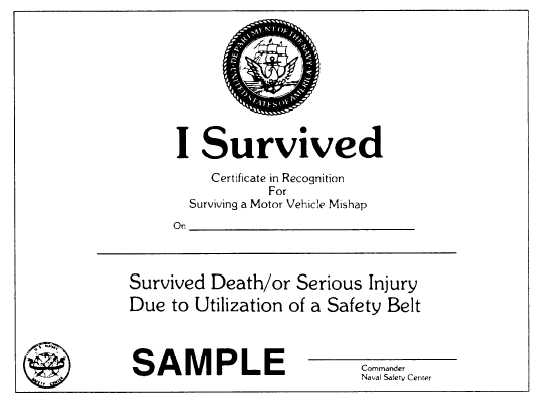| |
Figure 2-2.—NAVSAFECEN “I Survived” Club certificate.
by the Commander of the Naval Safety Center. The story
may appear in the Safetyline magazine. For more
information contact the Naval Safety Center, Naval Air
Station, Code 42, Norfolk VA 23511-5796.
SAFETY AND OCCUPATIONAL
HEALTH MANAGEMENT PRINCIPLES
You should not question that safety and
occupational health management go hand in hand.
When you pursue one to the disadvantage of the other,
the total outcome becomes less effective and less
efficient. A common misconception is that safety is an
isolated topic pursued by specialists and misunderstood
by line management. That is true when managers have
either ignored or been unaware of safety procedures. It
is also true when managers have chosen to take risks
without considering the impact on the total operation.
You must accurately assess the impact of your
decisions on the organization and its goals. Then, if you
must take risks, you will take them with full knowledge
of the expected impact. You will achieve organizational
goals by following prescribed safety precautions. You
can enhance occupational safety and health (OSH)
management by following safety management
principles and establishing safety policies.
The following are some OSH principles you may
find useful:
1. Good management fosters safety: Safety
management is the part of the management process that
identifies potential hazards and failures that could result
in injury and property damage. Management is part of
the decision-making process that considers the effects
of a possible hazard on workers, material, and
organizational relationships.
2. Safety is part of the professional job: You
should integrate OSH concepts and procedures into your
professional approach to every job. That is something
everyone, from top management through the first-line
supervisor to the worker, should do. All training and
apprentice programs should include OSH. Safety
demands cooperation among all levels of management
and workers.
3. Top management and command must be
involved: Top management must take the lead in
2-7
|

